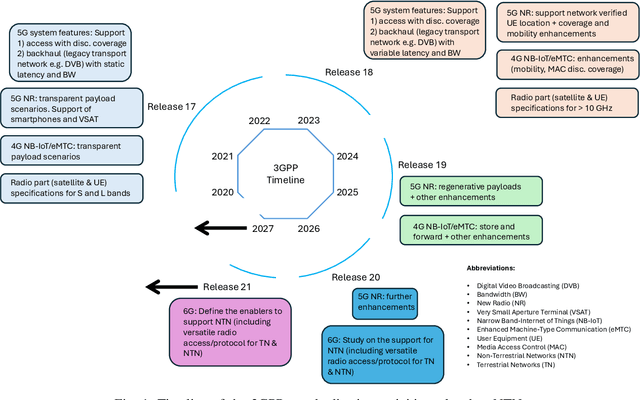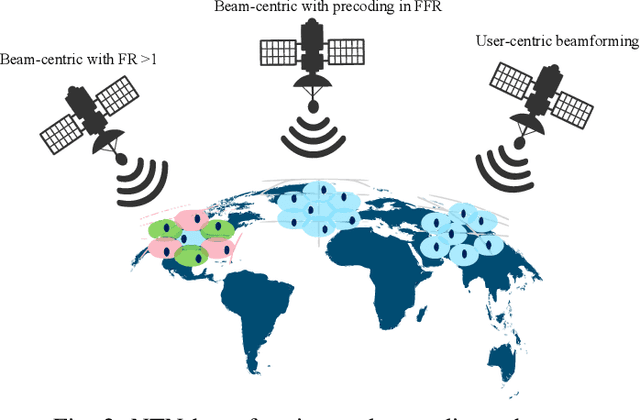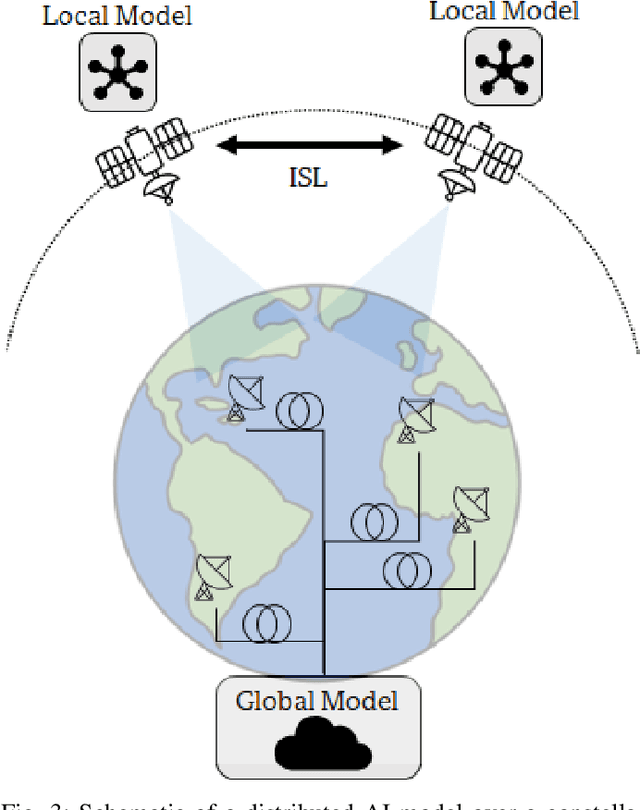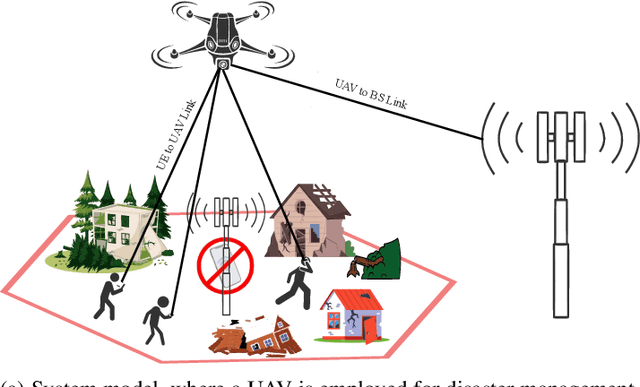Fanny Parzysz
Non-Terrestrial Networks for 6G: Integrated, Intelligent and Ubiquitous Connectivity
Jul 02, 2024



Abstract:Universal connectivity has been part of past and current generations of wireless systems, but as we approach 6G, the subject of social responsibility is being built as a core component. Given the advent of Non-Terrestrial Networks (NTN), reaching these goals will be much closer to realization than ever before. Owing to the benefits of NTN, the integration NTN and Terrestrial Networks (TN) is still infancy, where the past, the current and the future releases in the 3$^{\text{rd}}$ Generation Partnership Project (3GPP) provide guidelines to adopt a successfully co-existence/integration of TN and NTN. Therefore, in this article, we have illustrated through 3GPP guidelines, on how NTN and TN can effectively be integrated. Moreover, the role of beamforming and Artificial Intelligence (AI) algorithms is highlighted to achieve this integration. Finally the usefulness of integrating NTN and TN is validated through experimental analysis.
Open Datasets for AI-Enabled Radio Resource Control in Non-Terrestrial Networks
Apr 19, 2024Abstract:By effectively implementing the strategies for resource allocation, the capabilities, and reliability of non-terrestrial networks (NTN) can be enhanced. This leads to enhance spectrum utilization performance while minimizing the unmet system capacity, meeting quality of service (QoS) requirements and overall system optimization. In turn, a wide range of applications and services in various domains can be supported. However, allocating resources in a multi-constellation system with heterogeneous satellite links and highly dynamic user traffic demand pose challenges in ensuring sufficient and fair resource distribution. To mitigate these complexities and minimize the overhead, there is a growing shift towards utilizing artificial intelligence (AI) for its ability to handle such problems effectively. This calls for the development of an intelligent decision-making controller using AI to efficiently manage resources in this complex environment. In this context, real-world open datasets play a pivotal role in the development of AI models addressing radio control optimization problems. As a matter of fact, acquiring suitable datasets can be arduous. Therefore, this paper identifies pertinent real-world open datasets representing realistic traffic pattern, network performances and demand for fixed and dynamic user terminals, enabling a variety of uses cases. The aim of gathering and publishing the information of these datasets are to inspire and assist the research community in crafting the advance resource management solutions. In a nutshell, this paper establishes a solid foundation of commercially accessible data, with the potential to set benchmarks and accelerate the resolution of resource allocation optimization challenges.
Comparing a composite model versus chained models to locate a nearest visual object
Jun 02, 2023



Abstract:Extracting information from geographic images and text is crucial for autonomous vehicles to determine in advance the best cell stations to connect to along their future path. Multiple artificial neural network models can address this challenge; however, there is no definitive guidance on the selection of an appropriate model for such use cases. Therefore, we experimented two architectures to solve such a task: a first architecture with chained models where each model in the chain addresses a sub-task of the task; and a second architecture with a single model that addresses the whole task. Our results showed that these two architectures achieved the same level performance with a root mean square error (RMSE) of 0.055 and 0.056; The findings further revealed that when the task can be decomposed into sub-tasks, the chain architecture exhibits a twelve-fold increase in training speed compared to the composite model. Nevertheless, the composite model significantly alleviates the burden of data labeling.
 Add to Chrome
Add to Chrome Add to Firefox
Add to Firefox Add to Edge
Add to Edge